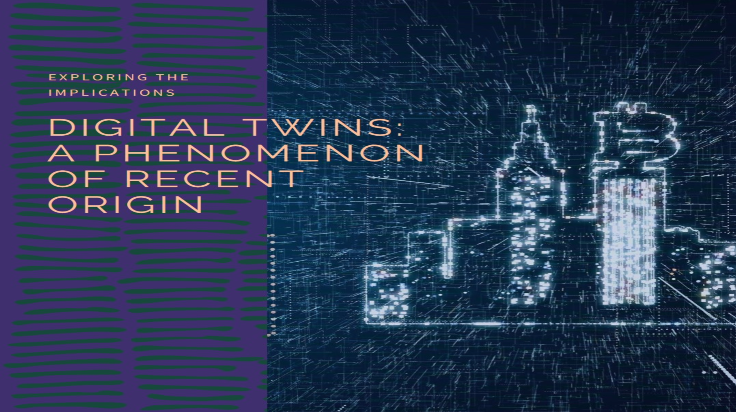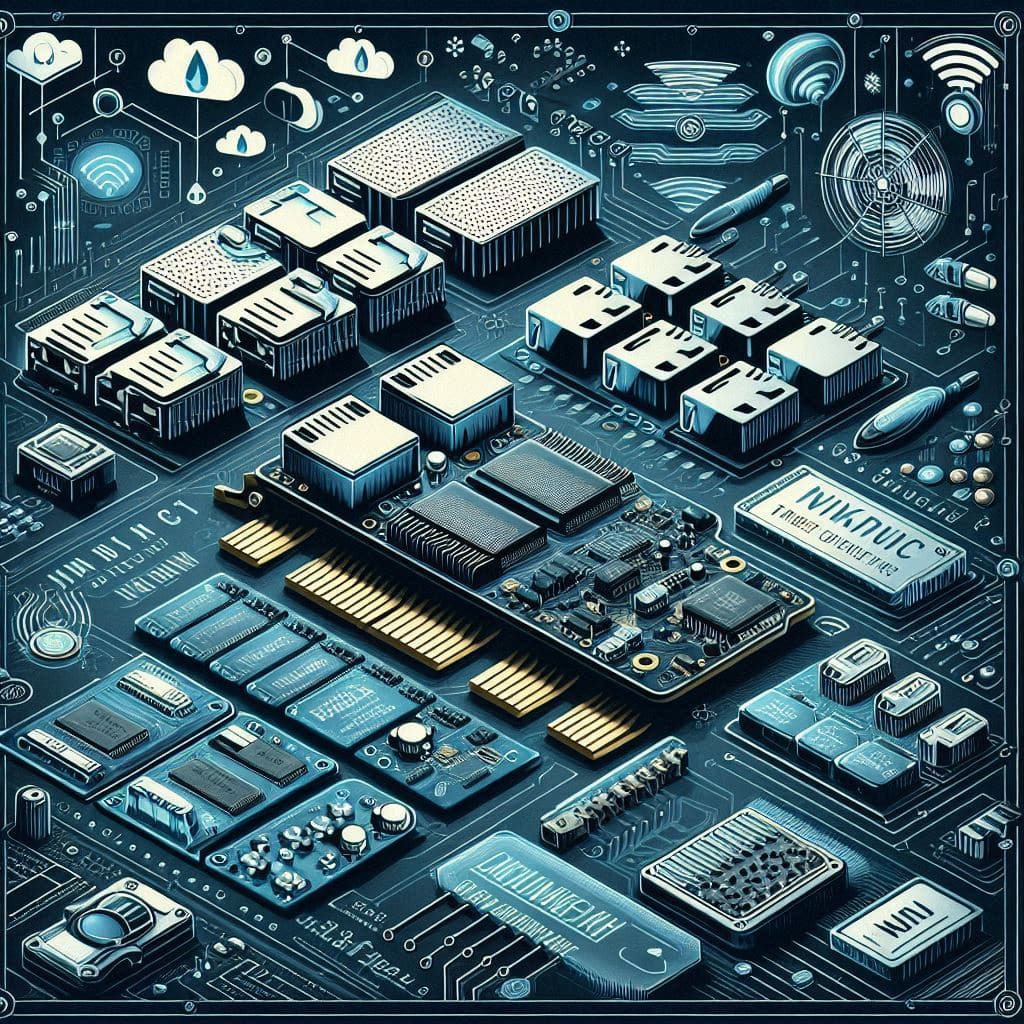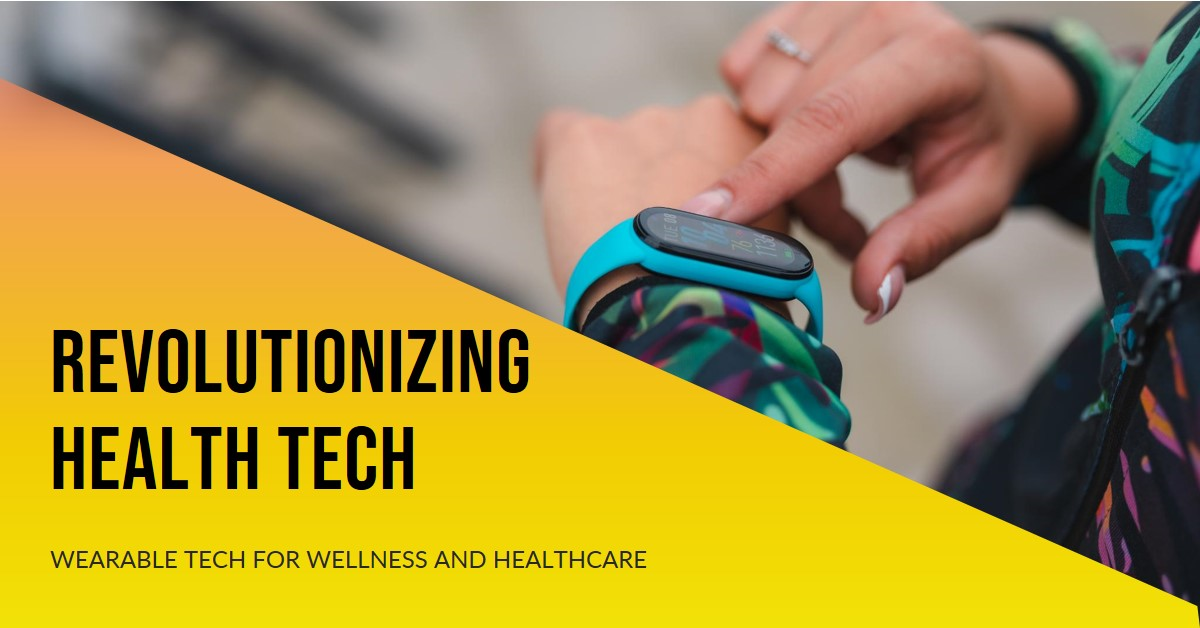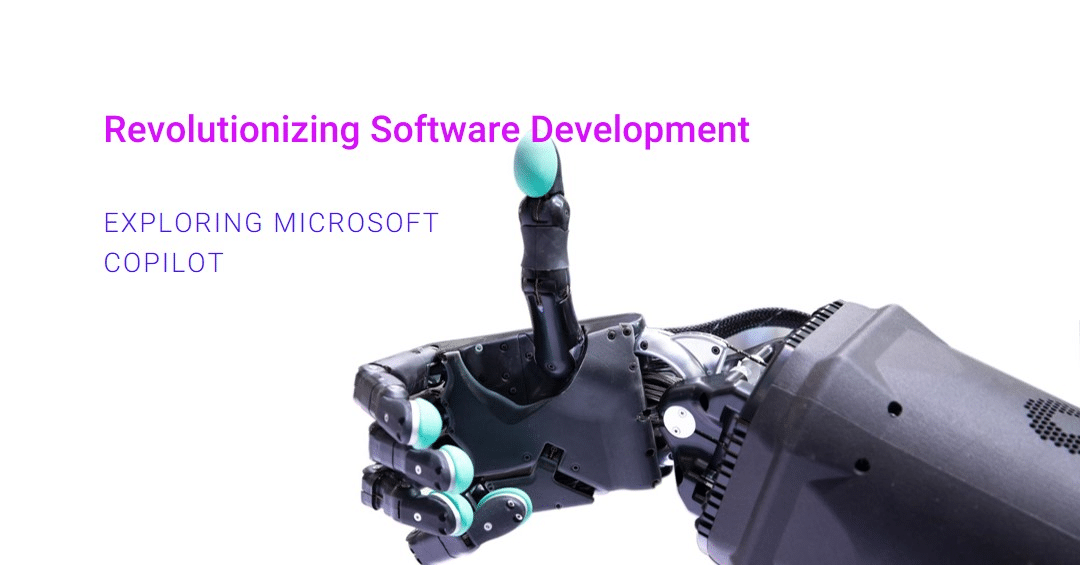Blog
From Sci-Fi to Reality: Digital Twins: A Phenomenon of Recent Origin and Its Implications

Quiz: Who is Ainsley? It is also sometimes presented such as a technician who is busy toying with a holographic plan over the spaceship’s engine. That is a reality that no longer seems far-fetched anymore. This is where digital twins come in; we are in the age of digital twins – a simulation of some product or process in a digital form that aims to make a corresponding improvement to the real-world object or process.
What are Digital Twins?
Consider such an AI-manque as a simulation of a jet engine, a power plant, or a city in general. Digital twin is a digital replica of a physical product which is capable of combining dynamic real time virtual behavior with the physical product behavior. The instrumentation stations that are placed in the real-world establish statistics like temperature, pressure, and vibrations. This is preserved and can be fed into a digital twin system that is used to demonstrate the behavior of the system and potential failure modes.
The Power of Prediction:
Digital twins are simply a new technology that is re-defining the system design and operation and maintenance methodologies. Here’s how:
- Predictive Maintenance: The data analytics performed on these digital twins can be used to identify any possible failure and breakdown that may occur and prevent them before they impact machines at later dates. This would make it possible to prevent problems from fester and subsequently causing machines to stop production – an occurrence which brings about costs.
- Product Optimization: VR is the creation of a three-dimensional environment that can be experienced using any peripheral that can register changes to the key senses such as vision and touch. Digital twin technology also means that they can test various designs to find out things like performance and identify design flaws at the early stage.
- Improved Efficiency: These models present virtual applications of what various situations might look like in a virtual space. This makes it easier to innovate processes and logistics, tools, materials, and resources applied in factories, in power grids, and even in the planning of an entire city.
The Rise of Digital Twins: A Perfect Storm of Technologies
The convergence of several key technologies is fueling the rise of digital twins:
- Internet of Things (IoT): The fact is that billions of sensors make it far easier to get interactive data from physical systems.
- Big Data Analytics: Data also has to do with the generation, storage, as well as management of digital twinning.
- Artificial Intelligence (AI) & Machine Learning (ML): Vendors can thereafter use the digital twin to feed AI and ML algorithm system and locate trends or predict an action or even recommend an intervention.
Guidelines for Digital Twin Use and Adoption
The applications of digital twins are vast and span numerous industries:
- Manufacturing: Predicting failures, improving efficiency and determining the best times for carrying out maintenance activities.
- Aerospace: What is the Flight Modeling and Engine Health and How are they Connected to Flight Safety?
- Energy: Short-term forecasting for smart grid demands: Probabilistic load flow and reliability modelling of supply systems for outages and wind power integration.
- Healthcare: Study objectives: Development of a patient avatar and identification of autophagy pathways associated with response to treatment and survival in urothelial bladder cancer: A pilot study.
Digital Twins: Computer-Supported Engineering in the Past, Present and Future
Moreover, the development of technology also guarantees the progress of digital twins. Consider a city that can better control its consumption of resources and a building that knows how to manage its energy consumption more effectively; imagine new personalized medicines that will always be accessible to patients. This can be counted as thousands of chances than we usually picture.
However, challenges remain. There are some other concerns that relate to privacy and security that also need to be addressed when it comes to open platforms. It is also crucial to demand that schedule and streaming data that are going to be transmitted to the digital twin are constant as well.
Conclusion:
Digital twins are no longer fictional. They are a potent force that will define the present and future towards a smarter, more efficient, and sustainable world. With this technology becoming better by the day, there is no doubt that many more life-changing applications of it still await us in the future.
FAQs:
How is a digital twin different from a simple computer model?
- Digital twins are more than static computer models that only depict one design or event.
How much technical knowledge do I need to apply digital twins?
- It depends. There are some digital twin platforms that are easy to use with no programming knowledge required for customization and others that are not.
Are digital twins secure?
- Yes but security is of paramount importance. It is prudent to have secure data encryption and other access controls for sensitive data.
Is the use of digital twins ethical?
- In fields such as healthcare, the issue of digital twin data privacy and ownership arises. These guidelines and regulations will help responsible use.
How much does it cost to implement digital twins?
- Prices depend on the complexity of the system and platform chosen but increase efficiency and decrease downtime can offset that cost.
How do I implement digital twins?
- Identify specific needs and industry requirements to identify suitable platforms. Digital twin information can also be obtained from online resources and courses.
Appliances
A World of Opulence: The Most Expensive Mechanical and Smart expensive watches for Men and Women

A World of Opulence: The Most Expensive Mechanical and Smart expensive watches for Men and Women Luxury watches pass past mere timekeeping; they’re extremely good statements of workmanship, technology, and style. This article delves into the world’s maximum high-priced mechanical and smart watches, showcasing ten masterpieces for each males and females in every elegance. From the problematic mechanics of mechanical watches to the contemporary-day era of smartwatches, we discover the attraction, features, and unique developments that make those timepieces stand out within the realm.
Mechanical Marvels: High-End Timepieces for Men expensive watches
- Patek Philippe Grandmaster Chime Ref. 6300A-010
Price: ~$31 Million
Specifications:
Movement: Caliber three hundred Grand Complication
Functions: 20 complications including a grand strike, minute repeater, and Westminster chime
Case: Stainless metallic with a duration of forty seven.7 mm
Dial: Reverse hand-engraved with a silvery opaline finish
Power Reserve: Approximately seventy two hours
Features:
The Patek Philippe Grandmaster Chime Ref. 6300A-010 is the undisputed king of steeply-priced watches, retaining the report for the most pricey wristwatch ever sold at public sale. This timepiece features 20 complications, such as a grand strike with a minute repeater, a perpetual calendar, and a Westminster chime. The hard hand-engraved dial, coupled with the chrome steel case, showcases Patek Philippe’s mastery in blending conventional craftsmanship with progressive engineering. This watch is not only a timekeeper but a symphony of horological genius, making it a coveted gem for creditors worldwide.
- A. Lange & Söhne Double Split
Price: ~$1.Three Million
Specifications:
Movement: Caliber L001.2, manually wound
Functions: Split-seconds chronograph, perpetual calendar, moon section
Case: Pink gold, diameter of 41.Nine mm
Dial: Silvered dial with black engraved numerals
Power Reserve: Approximately 55 hours
Features:
The A. Lange & Söhne Double Split is a masterpiece that combines sophisticated layout with technical prowess. It boasts a break up-seconds chronograph, a perpetual calendar, and a moon phase complication. Housed in a beautiful purple gold case, its silvered dial with black engraved numerals enhances its traditional appeal. The double split function lets in for simultaneous time measurements, making it a favorite among severe watch connoisseurs. This watch exemplifies the logo’s determination to precision and beauty, making it a image of reputation and sophistication.
- Richard Mille RM fifty seven-03 Tourbillon Diamond Twister
Price: ~$820,000
Specifications:
Movement: RM 57-03 manual winding, tourbillon
Functions: Hours, mins, tourbillon
Case: Titanium and sapphire crystal with diamonds
Dial: Sapphire crystal with skeletonized tourbillon
Power Reserve: Approximately 50 hours
Features:
The Richard Mille RM fifty seven-03 Tourbillon Diamond Twister is a surprise of engineering and layout. Its innovative crown rotates 100 and twenty levels to wind the motion, a function that devices it other than traditional watches. The case is adorned with diamonds, showcasing Richard Mille’s aptitude for combining opulence with technical innovation. The skeletonized dial offers a clear view of the complex tourbillon movement, emphasizing the watch’s avant-garde attraction. This timepiece isn’t most effective a testomony to Richard Mille’s craftsmanship but also a photo of futuristic design and comfort.
Four. Vacheron Constantin Tour de l’Ile
Price: ~$1.Five Million
Specifications:
Movement: Caliber 2755, manual winding
Functions: 26 headaches, which includes perpetual calendar, sky chart, and equation of time
Case: Platinum, diameter of forty seven mm
Dial: Silvered opaline with guilloché decoration
Power Reserve: Approximately fifty eight hours
Features:
The Vacheron Constantin Tour de l’Ile is a masterpiece of watchmaking with 26 complications, making it one of the maximum complex wristwatches inside the international. It capabilities a perpetual calendar, a sky chart, and an equation of time, among other capabilities. The platinum case with a diameter of 47 mm and the silvered opaline dial with guilloché decoration highlight its expensive format. This watch is a actual engineering marvel, blending artistry with horological innovation. The Tour de l’Ile is a party of Vacheron Constantin’s historical past and understanding in developing first-rate timepieces.
- Roger Dubuis Excalibur Double Flying Tourbillon
Price: ~$390,000
Specifications:
Movement: RD01SQ, manually wound
Functions: Hours, mins, double flying tourbillon
Case: forty five mm titanium with purple gold factors
Dial: Skeletonized with pink gold and black accents
Power Reserve: Approximately 48 hours
Features:
The Roger Dubuis Excalibur Double Flying Tourbillon is a actual feat of horological engineering. It features two tourbillons that negate the consequences of gravity on the motion, improving its accuracy. The skeletonized dial with purple gold and black accents offers a fascinating view of the complicated mechanism. Housed in a forty five mm titanium case with pink gold elements, this watch exudes a ambitious, avant-garde aesthetic. The Excalibur Double Flying Tourbillon is a testament to Roger Dubuis’s dedication to pushing the bounds of watchmaking.
- Greubel Forsey Art Piece Edition 1
Price: ~$1.5 Million
Specifications:
Movement: Caliber GF01, manually wound
Functions: Three-dimensional tourbillon, round differential, and planetary tools
Case: 47.5 mm platinum with sapphire crystal
Dial: Sapphire crystal with 3-dimensional tourbillon
Power Reserve: Approximately seventy hours
Features:
The Greubel Forsey Art Piece Edition 1 is a masterpiece of contemporary watchmaking, offering a three-dimensional tourbillon, a spherical differential, and a planetary tools machine. The 47.Five mm platinum case with sapphire crystal presents a striking view of the motion. The sapphire crystal dial complements the transparency, allowing the difficult mechanics to be completely preferred. This watch is a mix of art work and technological know-how, showcasing Greubel Forsey’s innovative spirit and dedication to pushing the boundaries of horological design.
- Audemars Piguet Royal Oak Offshore Grande Complication
Price: ~$1.Eight Million
Specifications:
Movement: Caliber 2889, manual winding
Functions: Minute repeater, perpetual calendar, chronograph
Case: 44 mm platinum with rubber and gold accents
Dial: Black with blue accents and skeletonized fingers
Power Reserve: Approximately 45 hours
Features:
The Audemars Piguet Royal Oak Offshore Grande Complication is a stunning mixture of sportiness and sophistication. It functions a minute repeater, a perpetual calendar, and a chronograph, all housed in a forty four mm platinum case with rubber and gold accents. The black dial with blue accents and skeletonized fingers gives to its ambitious, current look. This watch is a image of Audemars Piguet’s legacy in developing ultra-modern, excessive-performance timepieces that integrate conventional craftsmanship with modern format.
Eight. Hublot Big Bang Tourbillon
Price: ~$500,000
Specifications:
Movement: HUB6010, guide winding
Functions: Hours, minutes, tourbillon
Case: 45 mm titanium with ceramic bezel
Dial: Skeletonized with black and crimson accents
Power Reserve: Approximately a hundred and twenty hours
Features:
The Hublot Big Bang Tourbillon is a super fusion of technology and layout. It features a manually wound HUB6010 motion with a tourbillon, housed in a 45 mm titanium case with a ceramic bezel. The skeletonized dial with black and red accents gives a dramatic view of the tourbillon mechanism. This watch is a testomony to Hublot’s innovation in blending materials and mechanics, creating a timepiece this is each beneficial and visually lovely.
- Breguet Classique Tourbillon Ref. 5377
Price: ~$three hundred,000
Specifications:
Movement: Caliber 581, manually wound
Functions: Tourbillon, hours, minutes
Case: forty one mm platinum
Dial: Silvered gold with hand-engraved information
Power Reserve: Approximately eighty hours
Features:
The Breguet Classique Tourbillon Ref. 5377 is a classic example of Breguet’s determination to standard watchmaking. It talents a manually wound Caliber 581 motion with a tourbillon, housed in a forty one mm platinum case. The silvered gold dial with hand-engraved info showcases Breguet’s signature fashion and craftsmanship. This watch is a celebration of Breguet’s wealthy history, providing an excellent mixture of beauty, precision, and undying beauty.
- F.P. Journe Chronomètre à Résonance
Price: ~$3 hundred,000
Specifications:
Movement: Caliber 1499.Three, manually wound
Functions: Hours, minutes, chronometer with resonance
Case: 40 mm platinum
Dial: Silvered gold with guilloché ornament
Power Reserve: Approximately forty hours
Features:
The F.P. Journe Chronomètre à Résonance is a masterpiece of precision and innovation. It capabilities a manually wound Caliber 1499.Three movement with a resonance chronometer, housed in a forty mm platinum case. The silvered gold dial with guilloché ornament presentations F.P. Journe’s dedication to conventional craftsmanship and aesthetic refinement. This watch is renowned for its precise resonance mechanism, which enhances accuracy with the resource of synchronizing the vibrations of stability wheels. The Chronomètre à Résonance exemplifies F.P. Journe’s pursuit of horological excellence and technical ingenuity.

For the Ladies: Exquisite Mechanical Wristwatches
- Cartier Tortue de Formes Phoenix
Price: ~$1.Four Million
Specifications:
Movement: Caliber 9602 MC, guide winding
Functions: Hours, mins
Case: Platinum with gemstones and feathers
Dial: Silvered opaline with guilloché decoration
Power Reserve: Approximately 48 hours
Features:
The Cartier Tortue de Formes Phoenix is a real masterpiece of artistry and engineering. Its platinum case is formed like a phoenix, embellished with colorful gems and feathers. The silvered opaline dial with guilloché decoration affords to its pricey enchantment. This watch is a testament to Cartier’s statistics in combining high earrings with outstanding watchmaking, growing a timepiece that is as lovable as it’s miles state-of-the-art. The Tortue de Formes Phoenix is a rare gem that embodies Cartier’s legacy of beauty and innovation.
- Van Cleef & Arpels Heures d’Elles Poetic Complications
Price: ~$230,000
Specifications:
Movement: Caliber 138, automatic winding
Functions: Hours, minutes, retrograde date, moon stages
Case: White gold with diamonds
Dial: Mother-of-pearl with enamel butterfly and bird motifs
Power Reserve: Approximately 40 hours
Features:
The Van Cleef & Arpels Heures d’Elles Poetic Complications is a party of femininity and resourceful expression. Its white gold case is decorated with diamonds, growing a shimmering backdrop for the mom-of-pearl dial. The dial functions tooth butterfly and chook motifs that indicate the time and display retrograde date and moon stages. This watch is a testament to Van Cleef & Arpels’ mastery in creating poetic headaches that integrate aesthetic splendor with technical precision. The Heures d’Elles Poetic Complications is a real work of art that captures the essence of time via captivating layout.
Three. Breguet Reine de Naples 8998
Price: ~$one hundred and 80,000
Specifications:
Movement: Caliber 537/1, automatic winding
Functions: Hours, minutes, day-night time indicator, moon phase
Case: White gold with diamonds, 36.Five x 28.Forty five mm
Dial: Natural white mother-of-pearl, hand-engraved with floral motifs
Power Reserve: Approximately 45 hours
Features:
The Breguet Reine de Naples 8998 is a symbol of timeless elegance and class. Its oval case in white gold is embellished with diamonds, including to its high-priced attraction. The natural white mother-of-pearl dial is hand-engraved with sensitive floral motifs, showcasing Breguet’s interest to element and craftsmanship. This watch capabilities a day-night time indicator and a moon phase hardship, combining practical functionality with brilliant design. The Reine de Naples 8998 is a tribute to Queen Caroline Murat of Naples, who stimulated Abraham-Louis Breguet to create the first wristwatch, making it a image of Breguet’s rich background and innovation.
Four. Audemars Piguet Millenary Minute Repeater
Price: ~$four hundred,000
Specifications:
Movement: Caliber 2928, manual winding
Functions: Hours, minutes, minute repeater
Case: 47 mm pink gold with sapphire crystal
Dial: Skeletonized with pink gold hands
Power Reserve: Approximately 48 hours
Features:
The Audemars Piguet Millenary Minute Repeater is a masterpiece of watchmaking craftsmanship. It capabilities a minute repeater problem housed in a forty seven mm purple gold case with sapphire crystal, imparting a glimpse into the complex mechanics of the movement. The skeletonized dial with crimson gold palms complements its present day-day aesthetic while showcasing Audemars Piguet’s commitment to blending way of life with innovation. This watch is a testomony to the emblem’s know-how in growing immoderate-performance timepieces that enchantment to every connoisseurs and creditors.
Five. Jaeger-LeCoultre Rendez-Vous Celestial
Price: ~$a hundred fifty,000
Specifications:
Movement: Caliber 809/1, automated winding
Functions: Hours, mins, celestial problem
Case: White gold with diamonds, 36 mm
Dial: Blue aventurine with diamond-set constellations
Power Reserve: Approximately 40 hours
Features:
The Jaeger-LeCoultre Rendez-Vous Celestial is a celestial marvel that mixes horological artistry with astronomical precision. Its white gold case is decorated with diamonds, including a touch of brilliance to its fashionable format. The blue aventurine dial depicts the night time sky, with diamond-set constellations that tune the passage of time. This watch capabilities Jaeger-LeCoultre’s automatic Caliber 809/1 movement, supplying specific timekeeping and celestial indicators. The Rendez-Vous Celestial is a tribute to the splendor of the cosmos, making it a timeless companion for those who recognize each art and technological expertise.
The Tech Touch: Luxurious Smartwatches
For Her:
- Louis Vuitton Tambour Horizon Light Up expensive watches
Price: ~$3,three hundred
Specifications:
Operating System: Wear OS with the aid of Google
Processor: Qualcomm Snapdragon Wear 3100
Display: 1.3″ AMOLED with mother-of-pearl and customizable straps
Connectivity: Wi-Fi, Bluetooth, GPS
Case: Stainless metal with diamonds, 35 mm
Features: Notifications, activity monitoring, Louis Vuitton distinct watch faces
Features:
The Louis Vuitton Tambour Horizon Light Up smartwatch combines luxurious with current era. It features a 1.Three” AMOLED display with a mother-of-pearl dial and customizable straps, taking into account personalized style. Powered with the aid of manner of Wear OS with the aid of Google and Qualcomm Snapdragon Wear 3100, it offers seamless connectivity with Wi-Fi, Bluetooth, and GPS skills. The stainless-steel case with diamonds gives a hint of beauty, making it a statement piece for fashion-in advance human beings. With specific Louis Vuitton watch faces and vital clever features like notifications and hobby monitoring, the Tambour Horizon Light Up smartwatch is a mixture of favor and capability.
- Gucci Serena Sport expensive watches
Price: ~$1,300
Specifications:
Operating System: Wear OS via Google
Processor: Qualcomm Snapdragon Wear 3100
Display: 1.39″ AMOLED with customizable straps
Connectivity: Wi-Fi, Bluetooth, GPS
Case: Stainless steel with interchangeable straps
Features: Fitness tracking, heart rate monitoring, Gucci distinctive watch faces
Features:
The Gucci Serena Sport smartwatch is a fusion of sporty beauty and Italian luxurious. It talents a 1.39″ AMOLED display with customizable straps, taking into consideration a customized contact. Powered by way of the use of Wear OS via Google and Qualcomm Snapdragon Wear 3100, it ensures smooth overall performance and connectivity with Wi-Fi, Bluetooth, and GPS competencies. The chrome steel case with interchangeable straps offers versatility, at the same time as Gucci’s special watch faces add a wonderful aptitude. With advanced functions like health monitoring and coronary heart price monitoring, the Serena Sport smartwatch is designed for people who prioritize each style and capability of their accessories.
- Hermès Apple Watch Series 8
Price: Varies relying on version and band expensive watches
Specifications:
Operating System: watchOS
Processor: Apple S8 chip
Display: Retina LTPO OLED, sizes range
Connectivity: Wi-Fi, Bluetooth, GPS
Case: Stainless steel or titanium with Hermès leather-based bands
Features: Apple Pay, Siri, Hermès one of a type watch faces
Features:
The Hermès Apple Watch Series eight combines modern-day technology with undying Parisian beauty. Available in severa models and bands made from superb leathers, it gives a customizable revel in that blends seamlessly into any cloth wardrobe. Powered by means of the use of the Apple S8 chip and watchOS, it offers you speedy performance and a responsive person interface. The Retina LTPO OLED show offers colourful visuals, whilst features like Apple Pay and Siri enhance comfort. Hermès one of a kind watch faces add a touch of sophistication, making the Apple Watch Series eight a assertion of highly-priced and innovation.
- Misfit Vapor 2 Stella McCartney
Price: ~$3 hundred
Specifications:
Operating System: Wear OS by using the use of Google
Processor: Qualcomm Snapdragon Wear 2100
Display: 1.2″ AMOLED with customizable straps
Connectivity: Wi-Fi, Bluetooth, GPS
Case: Aluminum with interchangeable straps
Features: Heart rate tracking, hobby tracking, Misfit one-of-a-kind watch faces
Features:
The Misfit Vapor 2 Stella McCartney smartwatch is a collaboration among Misfit and fashion icon Stella McCartney. It combines style-forward layout with essential health and well being features, making it a versatile accent for everyday use. Powered via Wear OS through Google and Qualcomm Snapdragon Wear 2100, it guarantees smooth performance and connectivity with Wi-Fi, Bluetooth, and GPS capabilities. The aluminum case with interchangeable straps gives sturdiness and fashion, at the equal time as Misfit’s one of a type watch faces cater to character tastes. Whether tracking fitness dreams or staying related on the cross, the Vapor 2 Stella McCartney smartwatch blends function with fashion.
Five. Bvlgari Diva’s Dream smart expensive watches
Price: ~$6,800
Specifications:
Operating System: Wear OS through way of Google
Processor: Qualcomm Snapdragon Wear 3100
Display: 1.19″ AMOLED with ceramic and diamonds
Connectivity: Wi-Fi, Bluetooth, GPS
Case: Ceramic with diamond accents, 37 mm
Features: Notifications, interest tracking, Bvlgari unique watch faces
Features:
The Bvlgari Diva’s Dream smartwatch is a jewel at the wrist, combining costly with cutting-edge technology. Crafted from ceramic and embellished with diamonds, its aesthetic attraction is unprecedented. Powered via Wear OS through Google and Qualcomm Snapdragon Wear 3100, it gives seamless connectivity with Wi-Fi, Bluetooth, and GPS competencies. The ceramic case with diamond accents exudes sophistication, making it a declaration piece for discerning individuals. With important smart capabilities like notifications and interest tracking, in addition to Bvlgari’s one in every of a type watch faces, the Diva’s Dream smartwatch is a picture of beauty and innovation.
Conclusion
This article has explored the area of opulent timepieces, from the complicated mechanics of high-stop mechanical watches to the present day technology of costly smartwatches. Each timepiece featured embodies craftsmanship, innovation, and fashion, catering to the discerning tastes of watch aficionados global. Whether you’re captivated through the tricky headaches of a mechanical masterpiece or the seamless integration of technology in a smartwatch, those watches provide a glimpse into the arena of haute horlogerie. Each watch tells a tale of lifestyle, innovation, and timeless splendor, making it not most effective a timekeeper however a chunk of artwork.
Appliances
Exploring the Most expensive smartphones in the World

In modern-day interconnected world, expensive smartphones have transcended their utilitarian origins to become symbols of reputation, luxurious, and modern generation. This article embarks on a comprehensive journey through the realm of the arena’s priciest smartphones, meticulously examining their talents, specs, and the huge worldwide carrier networks that guide them. Whether you’re a tech fanatic, a connoisseur of luxury, or virtually interested in the top of cell innovation, this manual will immerse you within the complicated information of the most extravagant smartphones available today.
Defining Luxury expensive smartphones in Mobile Phones
Luxury inside the realm of expensive smartphones is an amalgamation of functionality, remarkable layout, top rate materials, and notable features tailor-made for the discerning few. It represents a mix of technological prowess and artisanal craftsmanship, in which manufacturers spare no cost in pushing the boundaries of what a cellphone can reap. These gadgets are not just equipment; they are statements of opulence and sophistication, catering completely to people who demand not anything but the excellent.
Luxury smartphones are characterized through their exceptional materials and meticulous craftsmanship. Materials along with aerospace-grade titanium, ceramic, carbon fiber, or even valuable metals like gold and platinum are normally used. These materials now not best beautify the durability of the devices however also lend a completely unique aesthetic attraction, placing them aside from mainstream smartphones. Designers pay meticulous interest to element, from the ergonomic contours that match perfectly in hand to the tricky engravings and custom finishes that mirror the owner’s non-public fashion.
The Evolution of Luxury Phones Across Decades
The concept of luxurious telephones has advanced appreciably over the decades, reflecting modifications in technology, purchaser options, and global monetary tendencies. Early luxurious telephones pioneered by using manufacturers like Vertu and Goldvish showcased extravagant designs crafted from materials which includes gold, silver, and special leathers. These devices were characterised not most effective with the aid of their top rate build nice however additionally by means of their one of a kind services tailor-made for affluent shoppers.
As technology stepped forward, luxurious expensive smartphones commenced integrating contemporary features alongside costly materials. This evolution reflected broader developments in purchaser electronics, in which smartphones have become extra than simply conversation devices but additionally repute symbols. The transition from simple capability to excessive-performance computing machines underscored a shift toward blending opulence with technological innovation.
Pioneers within the Luxury Phone Market
The adventure into luxury expensive smartphones started out with trailblazers like Vertu, based in 1998 as a subsidiary of Nokia. Vertu fast established itself via presenting hand made phones embellished with valuable metals and gem stones, coupled with a concierge carrier that catered to the whims of its rich purchasers. Each Vertu smartphone was a testament to bespoke luxury, combining traditional craftsmanship with cutting-edge era.
Similarly, Goldvish emerged as another pioneer, that specialize in phones embellished with diamonds and uncommon materials. Founded in Switzerland, Goldvish epitomized European craftsmanship and exclusivity, appealing to creditors and aficionados in search of one-of-a-kind luxury devices. These early innovators set the stage for the convergence of luxurious and technology in the cell phone industry.
Modern Era: Integrating Technology with Luxury expensive smartphones
In current years, mainstream expensive smartphones giants which include Apple, Samsung, and Huawei have ventured into the posh phase, offering devices that blend state-of-the-art era with premium materials. This shift has democratized luxurious telephones to a point, making excessive-quit capabilities more available whilst preserving exclusivity through restrained variations and bespoke customization alternatives.
Luxury variations of famous smartphones regularly characteristic stronger specifications, one-of-a-kind finishes, and personalised offerings that cater to the tastes of affluent purchasers. These gadgets now not handiest showcase the ultra-modern improvements in cell era however additionally spotlight the craftsmanship involved of their design and manufacturing. From bespoke software interfaces to custom-designed accessories, luxurious smartphones redefine personalization in consumer electronics.
Features and Specifications of the Most Expensive Phones expensive smartphones
When exploring the arena’s maximum pricey expensive smartphones, every tool represents a marvel of engineering, design, and technological innovation. These devices pass beyond conventional smartphones, supplying capabilities that redefine person expectancies and set new benchmarks within the industry.
Advanced Display Technologies
The display serves as a focal point for luxury expensive smartphones, presenting advancements along with OLED (Organic Light-Emitting Diode) and AMOLED (Active Matrix Organic Light-Emitting Diode) technology. These presentations offer colourful colorings, deep blacks, and power efficiency, enhancing both visible experiences and battery existence. Some luxury telephones even include bendy display technologies that curve elegantly across the device, similarly raising their aesthetic attraction.
State-of-the-Art Camera Systems
The photography talents of luxurious expensive smartphones rival those of professional cameras, thanks to excessive-resolution sensors, advanced optics, and complicated photograph processing algorithms. Multi-lens setups, including telephoto, extensive-angle, and macro lenses, enable users to capture designated shots in numerous lighting conditions. Artificial Intelligence (AI) upgrades similarly optimize snap shots, making sure first rate readability and realism in every photo.
Exceptional Performance expensive smartphones
Luxury telephones prioritize overall performance with the state-of-the-art-generation processors, enough RAM (Random Access Memory), and expansive storage options. These specifications not most effective assist annoying programs like gaming and multimedia editing however also ensure a seamless person experience. High-performance portraits processors and AI accelerators beautify gaming and augmented reality (AR) stories, making luxury phones flexible tools for both productivity and leisure.
Design Excellence and Premium Materials
Crafted from substances inclusive of aerospace-grade titanium, ceramic, and scratch-resistant sapphire glass, luxurious phones combine sturdiness with elegance. Designers meticulously refine each thing of those gadgets, from ergonomic contours to tricky floor finishes, developing works of artwork that resonate with luxurious and sophistication. Custom finishes, along with hand-polished metallic frames and leather-wrapped backs, mirror a commitment to craftsmanship and exclusivity.
Global Service Networks
Owning a luxurious expensive smartphones includes more than possessing a premium device; it involves get entry to to a complete assist and provider ecosystem that spans continents. Manufacturers apprehend the significance of worldwide reach, ensuring that customers acquire spark off assistance and customized care wherever they will be placed.
Service Excellence Across Continents
In North America, luxurious telephone provider centers are strategically positioned in essential metropolitan regions, providing personalized assist and expedited restore offerings. Brands prioritize client pleasure through offering concierge offerings for VIP customers, ensuring that their gadgets acquire meticulous attention and care.
European Heritage of Craftsmanship
Europe boasts a rich heritage of craftsmanship, meditated in the meticulous provider supplied for luxurious telephones. Service centers combination conventional expertise with present day diagnostics, making certain that every device is maintained to the highest requirements. Whether repairing difficult hardware or updating bespoke software program functions, European carrier facilities uphold a legacy of excellence and attention to element.

Technological Advancements in Asia-Pacific
Asia-Pacific serves as a hub of technological innovation, with luxurious cellphone carrier centers equipped with ultra-modern diagnostic gear and specialized know-how. Customers advantage from efficient carrier methods and access to specific add-ons, making sure that their gadgets remain at the forefront of generation and style.
Tailored Services inside the Middle East and Africa
Service centers within the Middle East and Africa cater to the specific options of luxurious telephone owners, supplying bespoke answers and personalized help. Concierge offerings are not unusual, presenting VIP customers with unique privileges and ensuring that their luxurious devices maintain their prestige and capability.
Future Trends in Luxury Phones expensive smartphones
As generation continues to advance and purchaser expectancies evolve, the panorama of luxurious phones will absolutely undergo further modifications. Manufacturers will innovate no longer most effective in phrases of features and substances but also within the provider stories they offer globally. Enhanced connectivity, augmented fact integration, and sustainable manufacturing practices are probable to form the destiny of luxurious smartphones, catering to a discerning target market that values innovation, exclusivity, and environmental stewardship.
Luxury smartphones are also possibly to include advanced security features inclusive of biometric authentication and stable hardware modules to shield touchy data. These gadgets will increasingly integrate seamlessly into smart home ecosystems, supplying more advantageous comfort and connectivity.
Furthermore, the customization options for luxury smartphones are anticipated to expand, allowing users to personalize no longer most effective the outside design however additionally the software program interface and capability. Brands may also collaborate with renowned artists, designers, and luxury brands to create constrained-edition collections that cater to precise aesthetic tastes and cultural developments.
In Conclusion
The global’s maximum high priced phones epitomize the convergence of cell innovation and comfort. From their contemporary functions to their tremendous worldwide service networks, those devices cater to folks who are searching for remarkable great, craftsmanship, and exclusivity in every aspect of their cellular revel in. Whether as symbols of prestige or as gear for productivity and entertainment, luxurious smartphones continue to redefine the limits of what is possible in purchaser electronics, setting new standards for innovation and elegance in the virtual age.
-

Harnessing Solar Power On-the-Go: The Rise of Foldable Solar Panel Installations
-

A World of Opulence: The Most Expensive Mechanical and Smart expensive watches for Men and Women
-

Exploring the Most expensive smartphones in the World
-

Introduction to Network Cards: Evolution, Types, and Technologies
Blog
What Is the Best Protein Source for Your Body?

Poking at the nutritional value, protein is one significant nutrient that is used in the body in the building of tissues, repair and various other functions. Protein belongs to a type of macromolecule which is composed of amino acids which are common known as the vital macromolecule. It is important for muscle building, immune system, and several functions within the body.I But while there are many sources that you can get protein from, how do you tell which one will be healthier for your body? This is going to be a complete guide on Protein sources/ Types wherein we will talk about all forms of protein and then identify what type of protein will suit you the best.
Protein and its relevance in the body: A look into definition of Protein
Like carbohydrates and fats, protein is a macronutrient, meaning that it is important to the body for proper functioning. Unlike fats and carbohydrates, there is no protein storing process in our body, which means we need to include it in our diets.
Key Roles of Protein:
- Muscle Repair and Growth: Protein will play a vital role in muscle repair and building and it is therefore important to have it after exercise.
- Enzyme and Hormone Production: They all are made of chains of amino acids; many enzymes and hormones in our body are made of proteins.
- Immune Function: Proteins are vital structures of the body and are vital in the formation and function of the immune system.
- Transport and Storage of Molecules: Protein is involved in the movement of molecules and nutrients within a cell and they act as storage places.
Types of Protein Sources
Sources of Protein are again both animal based as well as plant based. In turn, all the mentioned sources have their advantages and useful properties, as well as disadvantages and vices.
Animal-Based Proteins
Now, animal based proteins are normally referred to as complete proteins because they contain all the essential amino acids that are required by our body. Some common animal-based protein sources include:Some common animal-based protein sources include:
1. Meat:
- Beef, Pork, and Lamb: They are protein foods and also contain other nutrients compounds such as iron and zinc. However, they are also higher in saturated fats and this makes them unfavorable for use in preparing foods for consumption.
- Chicken and Turkey: Said meats are very rich in protein and have less fat than the red meats though containing a higher cholesterol level.
2. Fish and Seafood:
- Salmon, Tuna, and Mackerel: These are fatty fish, which are also sources of proteins and should also carry omega-3 fatty acids which are good to the heart.
- Shellfish: Other seafoods, such as shrimp, crab and lobster are also other hardy protein sources with relatively low fats.
3. Dairy Products:
- Milk, Cheese, and Yogurt: Meals like yoghurt, butter, cheese are really important as they contain proteins and calcium which is vital for building bone types.
- Greek Yogurt: Protein smooth yoghurt: This type of yoghurt contains more protein than the standard yoghurt and is recommended for consumption by individuals who want to get their proteins through snacks.
3. Eggs:
- Whole Eggs: Eggs are considered to be one of the heathiest foods with all the nutritious value including proteins, vitamins, and minerals. The white part of the egg is rich in protein while the yellow part, known as the yolk, is rich in protein, vitamins and fats.
4. Plant-Based Proteins
Protein from plants can be seen to be more popular and common in diet than before most especially for vegetarians and vegans. Although multiple plant protein sources are incomplete, cooking them together and included with other foods will result in all the essential amino acids. Some common plant-based protein sources include:Some common plant-based protein sources include:
Legumes:
- Beans, Lentils, and Chickpeas: These are good sources of protein and these are good sources of fibers. They also contain very small proportions of fat and can assist in complementing correct cholesterol levels in the body.
Nuts and Seeds:
- Almonds, Walnuts, and Chia Seeds: These are good sources of protein and healthy fats. They have to be prepared healthily in order to provide this benefit. It can be used as an ingredient of food products and it can also be incorporated into meals and snacks to boost their protein content.
Whole Grains:
- Quinoa, Brown Rice, and Oats: Through research it is evidenced that whole grains foods contain moderate protein content besides fiber and other nutrients. It is proven that quinoa is a complete protein, which can make it literally priceless for people who decided to go plant-based.
Soy Products:
- Tofu, Tempeh, and Edamame: Soy products are some of the rare products that are plant derived and which are also complete proteins. They can be utilized in different preparations and served in a between-plates manner.
Vegetables:
- Broccoli, Spinach, and Brussels Sprouts: Even though vegetables are not exceptionally rich in protein as compared to meats or dairy products, they do have a certain amount of the nutritional macromolecule and are loaded with numerous other substances.
Comparing Protein Sources
In selecting the best protein, one should first analyze different aspects in relation to protein quality, digestibility and the total nutrient value of the food product.
Protein Quality
Nutritional quality of protein depends on its ability to supply essential amino acids or how easily it is utilized in the body. Animal proteins are superior to plant proteins in most cases because the animal-based proteins contain a complete amino acids chain. However, there are certain plant protein sources such as quinoa and others which may also contain all the essential amino acids.
Digestibility
The rate that protein gets digested and absorbed in the body is also of significance. Word animal proteins are known to be of higher biological value than plant proteins since the former has better digestibility. Still, there are some of the plant proteins that for one reason or another are insoluble, or their digestion is very poor, although if combined, they may become rather well digested.
Nutritional Content
In essence, it is not just the quantity but also the quality of the protein that counts. The nutrient density of a protein source should be put under consideration. For instance, common items such as salmon are rich in protein and omega3 fatty acids that are beneficial to the heart. While beans and lentils provide protein, fiber and vitamins they provide, other benefits include.
Protein meal types: The best proteins to choose for the respective purposes
Protein foods that hold the highest rating are determined by several factors including muscle gain, weight management and overall health goals .
For Muscle Building
Most of the structural and enzymatic proteins need high-quality, complete proteins to enable muscle growth and repairing. Protein sources from animals are preferred due to their composition of all essential amino acids and high biological values they possess; the best example is chicken, fish, and diary products.
- Chicken Breast: Lean meat that offers about 31% high protein concentration with fifty-grams protein per one hundred grams.
- Salmon: Apart from being high in protein they are also sources of Omega-3 fatty acids which are important in rebuilding muscle tissue and supporting the heart.
- Greek Yogurt: Contains approximately 10 grams of protein per serving per 100 grams and could serve as a very suitable snack after training.
For Weight Loss
Protein has benefits for weight loss plan since it increases satiety and maintains muscle mass while on low calorie intake plan. The lean proteins with less fat should be consumed to enable reduction of weights in the body.
- Turkey Breast: An illustration of a lean meat with protein content of roughly 290 g per 100 g.
- Lentils: They are rich in protein and fiber; which makes you feel full for longer, and promotes bowel movement.
- Tofu: A widely-used, lean protein that can be incorporated into different meal preparations.
For Overall Health
From the food point of view, one should consume all types of proteins in order to be as fit and healthy as possible.
- Eggs: An advantageous food, containing protein and other essential nutrients in the diet.
- Quinoa: A protein complex that also holds fiber as well as other nutrients like magnesium and iron.
- Almonds: A good source of protein and healthy fats, which could contribute to the healthy functioning of the heart.

Balancing Animal and Plant Proteins
Though animal protein sources are usually superior in terms of nutritional quality to plant protein sources, they are not without their advantages; they usually provide fiber and phytonutrients. It means that making a combination of both in equal proportions can make it possible to have a balanced diet.
Tips for Balancing Proteins:
- Combine Different Plant Proteins: Pat yourself on the back if you fancy beans with your rice or seeds in your oatmeal as this is good enough for a complete protein package.
- Incorporate More Fish: Try to incorporate some form of fish into your diet at least two times a week to get enough protein and omega-3.
- Snack on Nuts and Seeds: These are easy to come by and can help you increase your intake of protein during the day and in between meals.
FAQs about Protein Sources
What is the importance of protein in the human body?
- Since protein is one of the macronutrients, it plays a significant role in growth, tissue repair, and body tissue maintenance. Muscle building, enzymatic synthesis and hormone synthesis, immune response, nutrient transport and storage are some of the functions of this vitamin.
What do you understand regarding complete and incomplete proteins?
- These are proteins that contain all the nine amino acids which are not synthesized in the body. The animal based complete proteins include meats, fish, eggs, and dairy products while plant-based complete proteins include quinoa and soy. These are proteins that are missing one or more amino acids and they are found in most plant based foods.
Can one consume enough protein from plant sources?
- Yes, it is possible to have your protein requirement met from plant products alone. When you combine two or more plant based protein sources such as beans and rice or hummus and whole grain bread, then you are adequately supplying your body with every amino acid that it needs.
Which foods are rich in animal based proteins?
- Some of the recommended animal-based protein foods include; Chicken breast, salmon, Greek yogurt, eggs, and lean beef and pork. These sources are sources of proteins and other nutrients that are needed in the body system.
Which foods contain the highest amount of protein?
- The best sources of plant proteins include lentils and beans, tofu, quinoa, nuts and seeds and whole grain products. They add protein, fiber, and the appropriate vitamins and minerals to the human body.
Conclusion
The decision-making process of the best protein sources varies with the health and nutritional needs of an individual. It is possible to conclude that animal proteins and plant proteins have their advantages and can be included in our diet. Make sure to try as many different proteins as possible so that the body gets all the essential amino acids that it requires.
This way you are informed and aware of the various protein sources available out there to provide for your nutritional needs. Be it the need to gain muscle mass, shed a few pounds, or just live a healthier life, there is a protein out there for you.
-

 Blog2 years ago
Blog2 years agoBest Makeup Trends In 2024: Look Beautiful this year
-

 Appliances1 year ago
Appliances1 year agoIntroduction to Network Cards: Evolution, Types, and Technologies
-

 Blog1 year ago
Blog1 year agoBiotech Breakthroughs: Innovations in Gene Editing, CRISPR Technology, and Personalized Medicine
-

 Appliances1 year ago
Appliances1 year agoIntel vs. Apple Silicon: CPU Showdown for Laptops
-

 Appliances3 years ago
Appliances3 years agoBlack Friday Home Appliance Deals: Our Exclusive Sneak Peek On The Early Black Friday Appliances Deals
-

 Technology12 months ago
Technology12 months agoHarnessing Solar Power On-the-Go: The Rise of Foldable Solar Panel Installations
-

 Blog2 years ago
Blog2 years agoTop 5 Best Housewarming Gifts to Warm Someone’s New Home
-

 Appliances1 year ago
Appliances1 year agoExploring the Most expensive smartphones in the World





